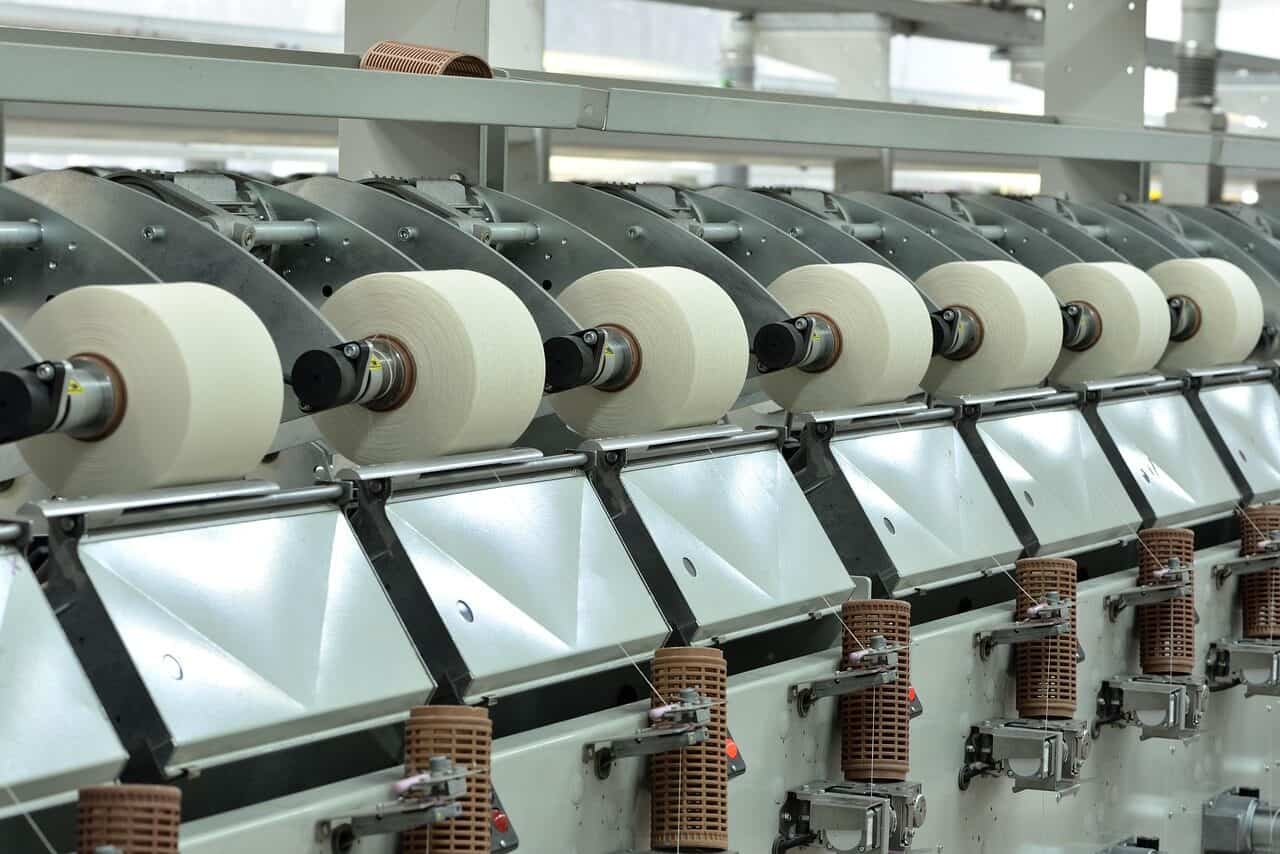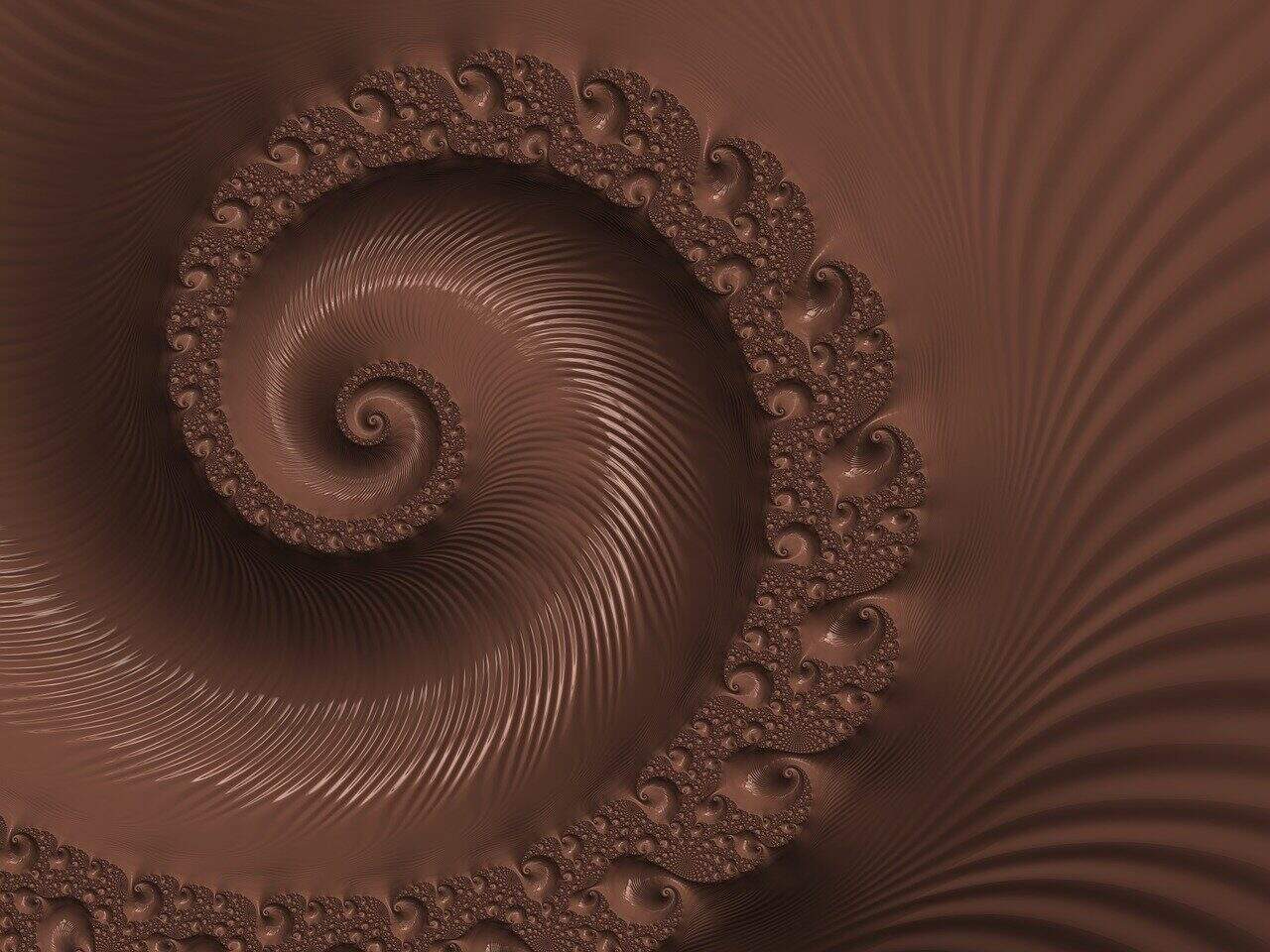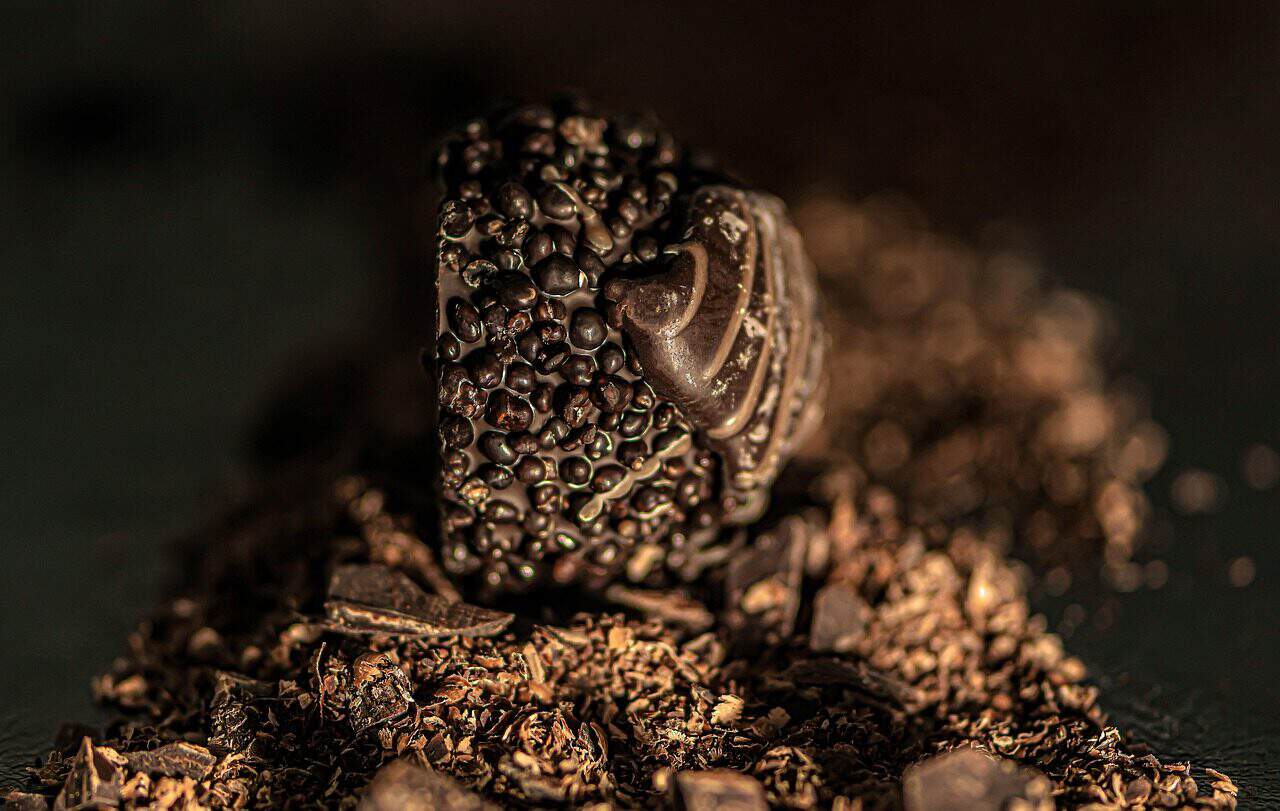La science du sucré : Une analyse technique du requin gommeux en bonbons
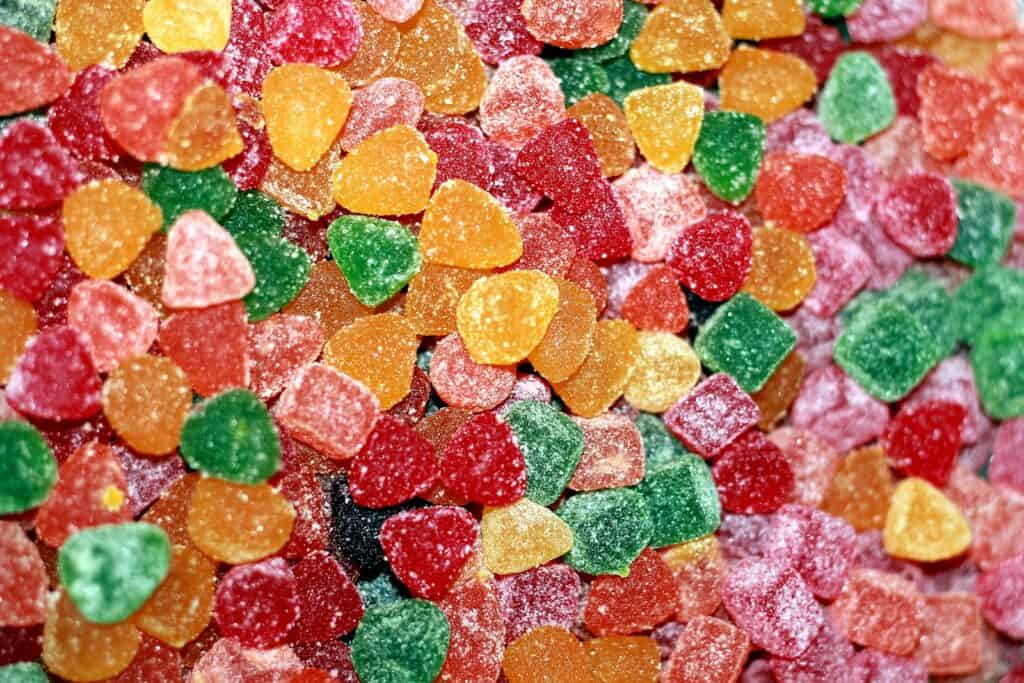
Au-delà de la teinte bleue
Le requin en bonbons gélifiés est immédiatement reconnaissable. Sa forme bleue et blanche en fait une icône de la confiserie. La plupart des gens le considèrent comme une simple friandise nostalgique.
Mais pour nous, c'est quelque chose de bien plus fascinant. Il représente une merveille de l'ingénierie alimentaire.
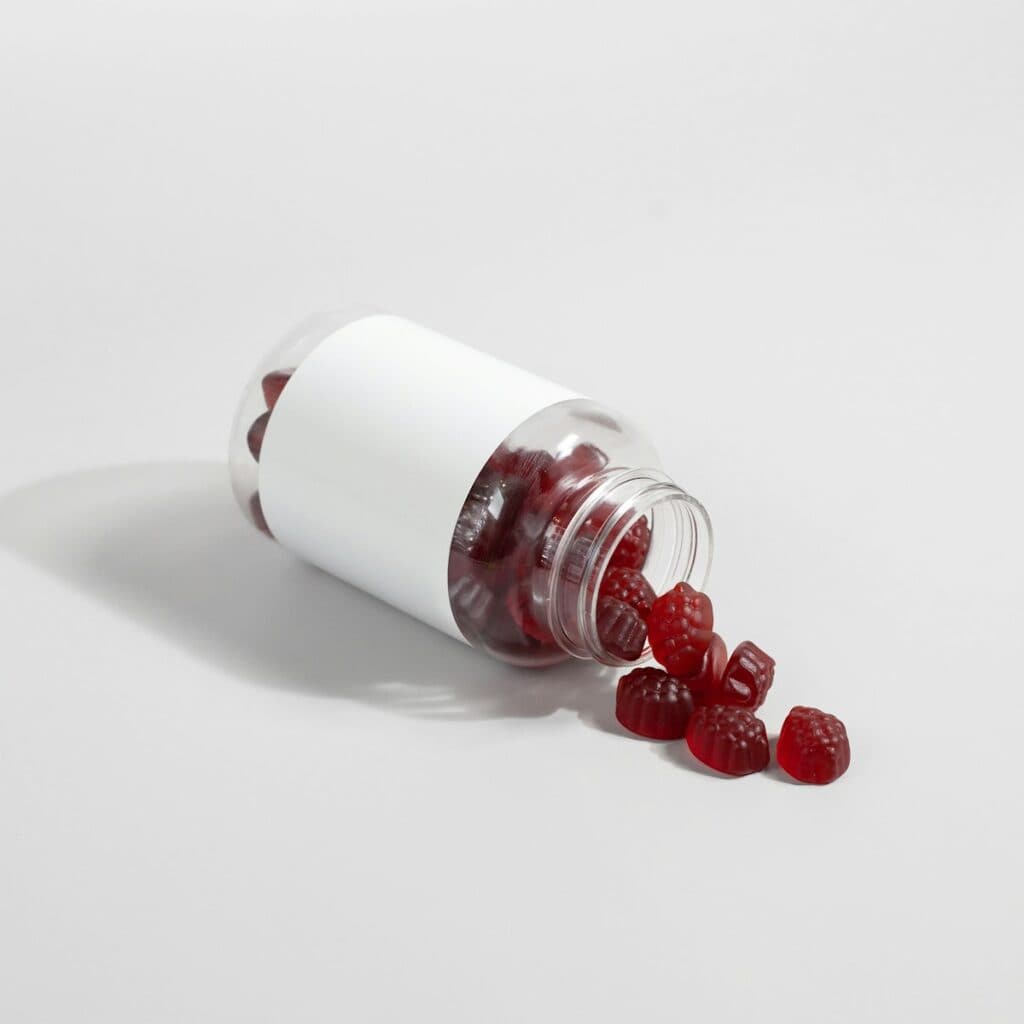
Ce bonbon familier cache une incroyable complexité. Derrière sa mâche satisfaisante se cache un processus en plusieurs étapes qui fait appel à la chimie, à la physique et à la fabrication de précision. Nous allons de dépasser sa simple apparence et d'explorer les fondements techniques qui rendent ce bonbon possible.
Cette analyse se penchera sur le requin gommeux dans son intégralité. Nous examinerons la science de son structure de l'hydrocolloïde et la mécanique de sa production industrielle. Nous nous pencherons également sur la chimie de son saveur et couleur, et le contrôle de qualité rigoureux qui garantit que chaque requin est parfait.
Regarder la fascinante processus industriel de production de bonbons gélifiés, du mélange au moulage.
Vous découvrirez les principes de la chimie des hydrocolloïdes et le fonctionnement d'un magnat de l'amidon. Nous explorerons également les nuances de la science sensorielle qui transforment des ingrédients de base en un produit mondialement reconnu.
Fonctions principales des composants
Pour comprendre le bonbon dans son ensemble, il faut d'abord en analyser les différentes parties. Le requin gommeux n'utilise que quelques ingrédients clés. Chacun d'entre eux est sélectionné pour une fonction technique spécifique, et pas seulement pour son goût.
Ces composants agissent ensemble pour créer la texture, la stabilité et le profil sensoriel du produit final.

- Gélatine : Cette protéine hydrocolloïde constitue l'ossature structurelle du chewing-gum. C'est elle qui confère à la gomme son élasticité caractéristique. Le paramètre clé est la force de gonflement, qui mesure la fermeté du gel. Un requin gommeux ferme utilise généralement les éléments suivants gélatine dont le pouvoir de gonflement est compris entre 220 et 250. La force de Bloom mesure techniquement la force en grammes nécessaire pour qu'un piston standard enfonce la surface d'un gel préparé de 4 mm.
- Sirop de maïs/Sirop de glucose : Il ne se contente pas d'édulcorer. Il agit comme un “agent de raclage” qui interfère avec les molécules de saccharose. Cela empêche la formation de gros cristaux de sucre. Il en résulte une texture lisse et non granuleuse. Il aide également à contrôler la viscosité et l'activité de l'eau du produit final.
- Saccharose : Il s'agit du sucre de table. Le saccharose apporte le principal pouvoir sucrant et contribue de manière significative au volume et à l'extrait sec de la gomme. Le rapport entre le saccharose et le sirop de maïs est essentiel. Il permet de gérer à la fois le goût sucré et la texture.
- Acide citrique : Cet acide apporte l'acidité caractéristique qui équilibre le goût sucré intense. Il agit également comme conservateur en abaissant le pH. Il peut provoquer une inversion partielle du saccharose en fructose et en glucose, ce qui permet de mieux contrôler la cristallisation.
- Cire de carnauba : Cette cire à base de plantes est appliquée lors de l'étape finale de polissage. Elle agit comme un agent de glaçage qui crée une surface brillante et antiadhésive. Elle empêche les gommes de s'agglutiner les unes aux autres dans les emballages et procure une agréable sensation initiale en bouche.
La science de la mastication
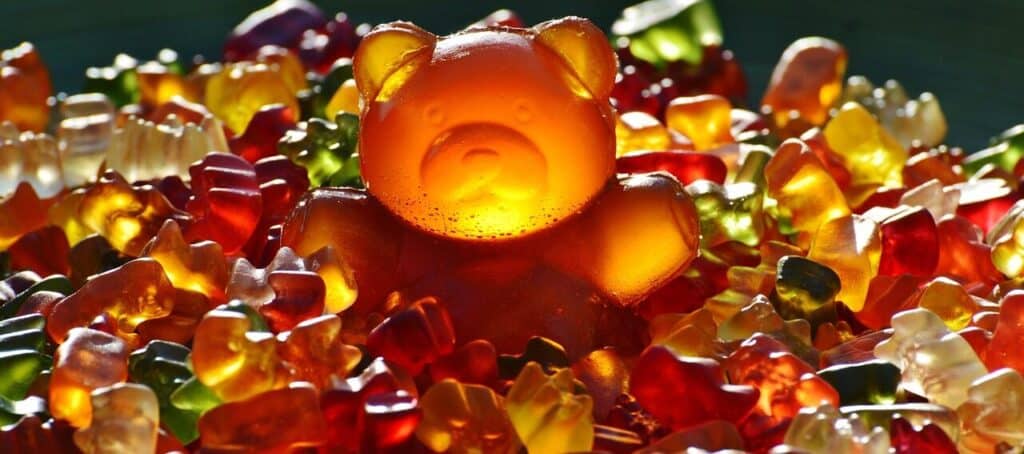
La caractéristique principale d'un bonbon gélifié est sa texture. Cette “mâche” n'est pas le fruit du hasard. C'est le résultat direct d'une chimie des hydrocolloïdes soigneusement contrôlée.
Explorons les processus moléculaires à l'origine de la morsure ferme et élastique du requin gommeux.
La matrice de gélatine
Le passage de la bouillie liquide à la gomme ferme commence par la gélatine. La gélatine est une protéine dérivée de la décomposition du collagène, provenant de tissus animaux.
Au cours de la phase de cuisson initiale, la poudre de gélatine s'hydrate dans l'eau. À mesure que la température augmente, les brins de protéines enroulés se déroulent et se dispersent uniformément dans la solution sucrée.
La magie opère lors du refroidissement. Lorsque la température descend en dessous d'environ 35°C, les protéines de la gélatine commencent à se réassocier. Elles forment un vaste réseau tridimensionnel. Cette matrice emprisonne efficacement la solution d'eau et de sucre dans ses poches microscopiques. Ce processus est appelé gélification.
Ce “filet moléculaire” confère au chewing-gum sa structure solide et irrégulière. La densité et la force de ce réseau déterminent la texture finale.
Paramètres de réglage critiques
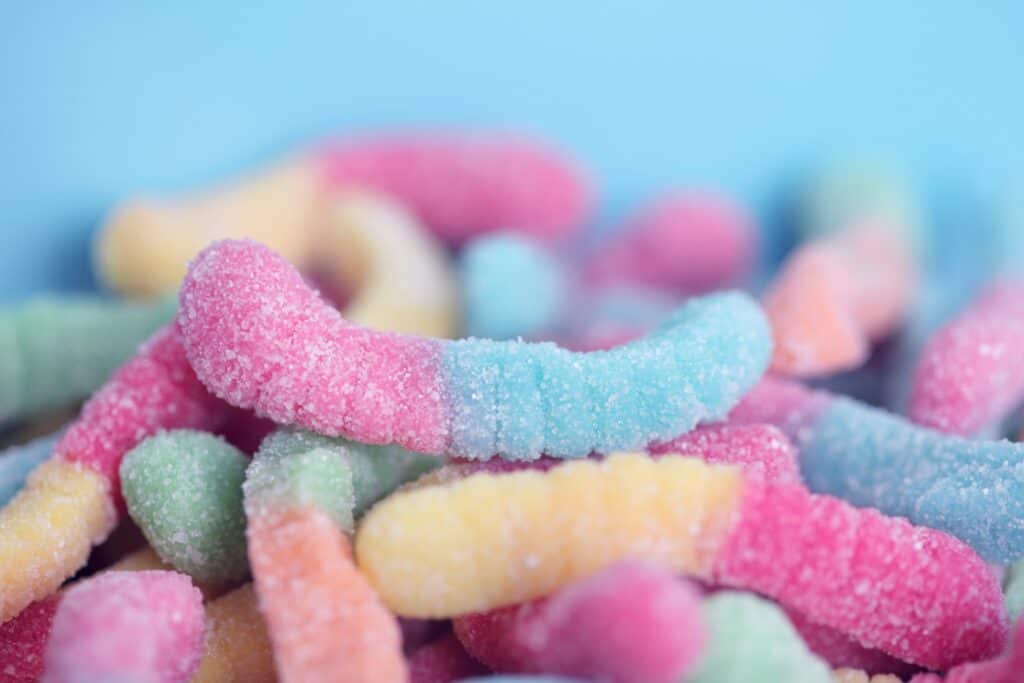
L'obtention d'une texture homogène lot après lot nécessite un contrôle précis de plusieurs paramètres critiques.
La température est primordiale. La bouillie doit être cuite à une température spécifique, généralement autour de 115°C. Cette température permet d'atteindre la teneur en solides visée et de dissoudre complètement la gélatine sans dénaturer la protéine par une chaleur excessive. Le refroidissement doit ensuite être lent et contrôlé pour permettre au réseau de gels de se former correctement.
Le niveau de pH joue également un rôle crucial. Il est géré par l'ajout d'acide citrique. Cet acide n'apporte pas seulement de l'acidité, il influence également la charge électrique nette des protéines de la gélatine. Cela peut avoir une incidence sur le degré d'adhérence des brins de protéines, et donc sur la résistance finale du gel.
Enfin, la force du bloom est la variable maîtresse. Une gélatine à forte teneur en bloom crée un gel plus rigide et plus élastique. Il en résulte un bonbon plus dur et plus moelleux. Une gélatine à efflorescence plus faible produit une texture plus douce et plus tendre. Le choix est une décision de formulation délibérée basée sur le produit final souhaité.
Pectine et gélatine
Alors que la gélatine est le choix traditionnel pour les requins gommeux, les alternatives à base de plantes comme la pectine sont courantes dans les confiseries végétaliennes. Il est essentiel de connaître leurs différences pour comprendre leurs textures distinctes.
Nous pouvons les comparer directement pour voir comment un simple changement d'ingrédient transforme le produit final.
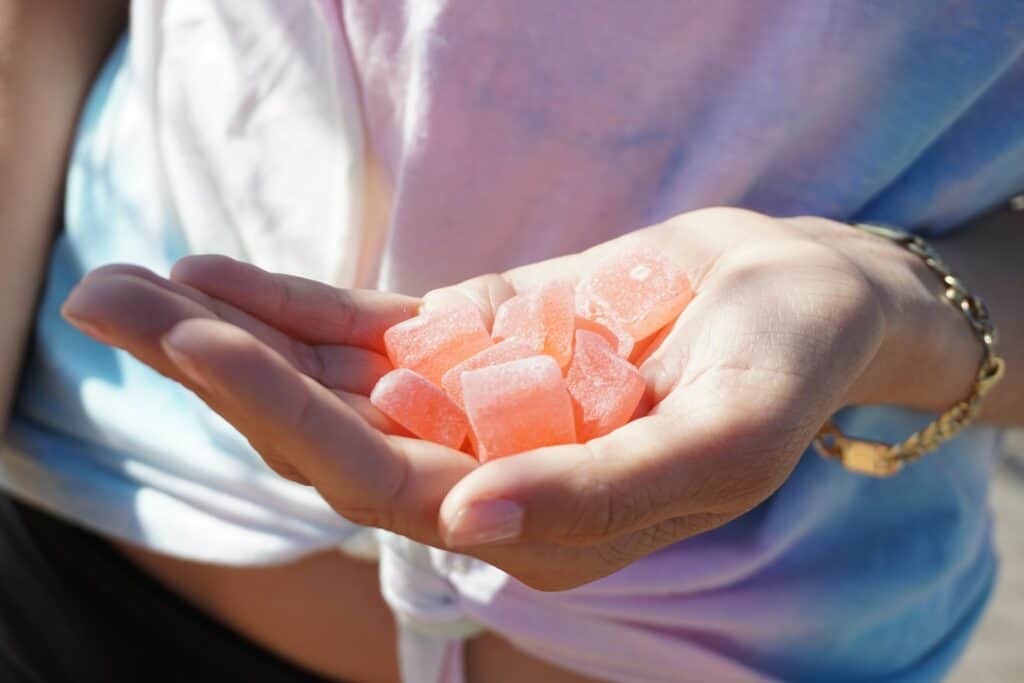
| Fonctionnalité | Gélatine | Pectine |
|---|---|---|
| Source | Animal (collagène) | Plante (généralement des écorces d'agrumes ou du marc de pomme) |
| Texture | Élastique, à mâcher, fond lentement dans la bouche | Morsure courte et tendre, rupture nette, moins masticatoire |
| Point de fusion | Faible (fond à une température proche de celle du corps) | Élevée (thermo-irréversible ; ne fond pas dans la bouche) |
| pH requis | Gels dans une large gamme de pH | Nécessite une plage de pH étroite et acide (typiquement 3,2 à 3,6) pour se gélifier correctement. |
| Processus de définition | Gels au refroidissement (thermoréversible) | Gels en présence de sucre et d'acide, moins dépendants de la température |
Cette comparaison montre pourquoi le requin gélifié à base de gélatine a une mâche classique et durable. En revanche, un bonbon gélifié à base de pectine offre une expérience de dégustation complètement différente et plus douce.
Ingénierie de la forme
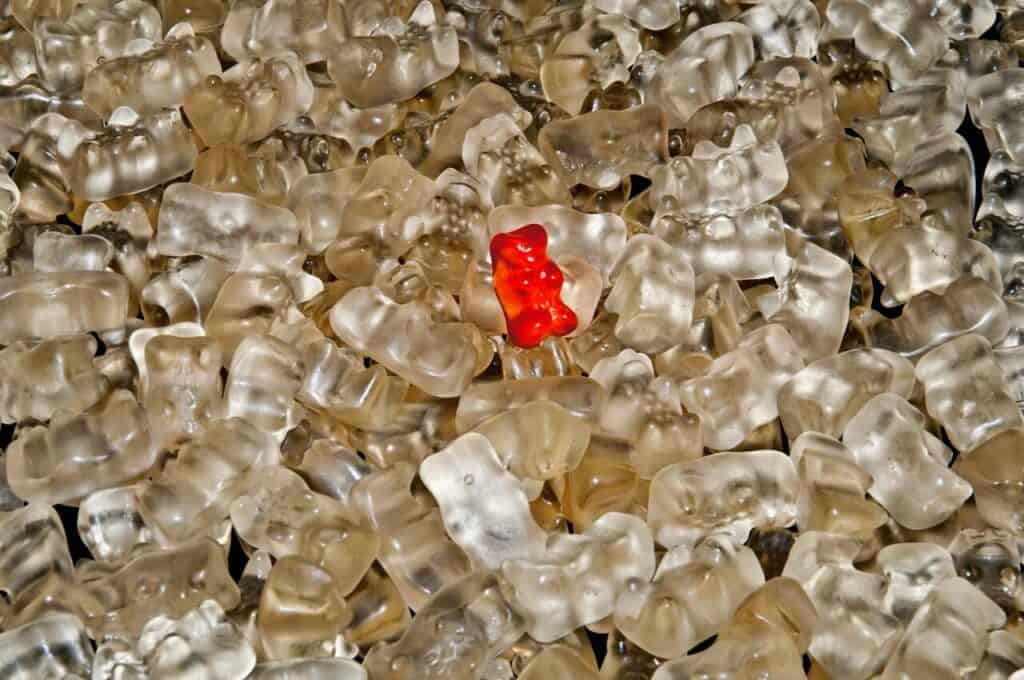
La forme emblématique du requin en bonbons gélifiés n'est pas créée à l'aide d'un simple emporte-pièce ou d'un moule. C'est le produit d'un processus industriel sophistiqué à haut volume. Ce processus est centré sur un équipement connu sous le nom de "machine à fabriquer des bonbons". magnat de l'amidon.
Ce système est la norme pour la production de la plupart des bonbons gélifiés formés. Des ours aux vers en passant par les requins.
Passons en revue les étapes de l'ingénierie de ce projet ligne de production continue.
Le processus Mogul
Découvrez l'ensemble du processus de fabrication de l'amidon, de la préparation de l'amidon au démoulage final des gommes.
- Conditionnement de l'amidon : Le processus commence par de grandes quantités d'amidon de maïs de qualité alimentaire. Cet amidon est tamisé et séché jusqu'à ce qu'il atteigne un taux d'humidité très spécifique et faible. Cette teneur est généralement de l'ordre de 5-7%. Ce conditionnement est essentiel car l'amidon joue un rôle primordial au-delà de celui de moule. Il absorbe l'humidité de la pâte gommeuse déposée pendant le durcissement.
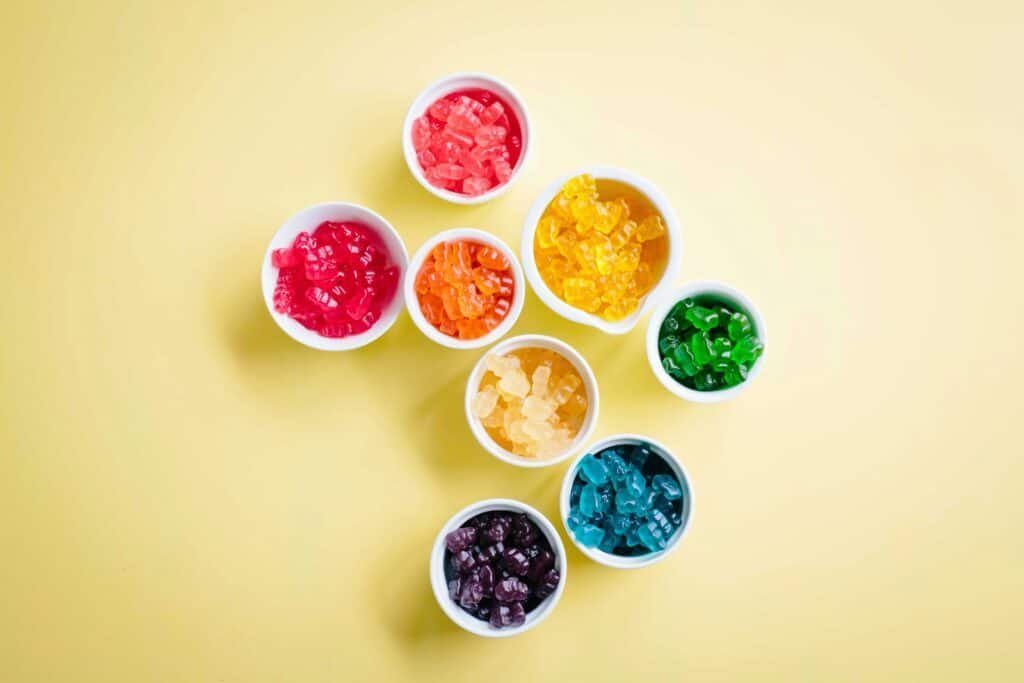
- Impression : L'amidon conditionné est nivelé dans de grands plateaux peu profonds. Une “plaque de moulage” est pressée fermement dans l'amidon. Il s'agit d'une plaque garnie de centaines de modèles de requins parfaitement sculptés. Lorsque la plaque est retirée, elle laisse derrière elle un plateau rempli de centaines de cavités parfaites et détaillées en forme de requin.
- Dépôt : La pâte gommeuse liquide et chaude est maintenue à une température et à une viscosité précises. Elle est transférée dans la machine à déposer. Une série de buses se déplace sur les plateaux d'amidon, injectant avec précision une quantité mesurée de bonbons liquides dans chaque cavité en forme de requin. Pour le requin classique en bonbons gélifiés, la dépose se fait en deux étapes. Une petite quantité de bouillie blanche aérée pour le ventre est déposée en premier. La partie bleue, plus grande, suit immédiatement.
- Salaison et stabulation : Les plateaux remplis sont ensuite empilés et transportés dans une salle de “stoving”. Il s'agit d'un environnement à climat contrôlé où les gommes reposent pendant une période prolongée. Cette période dure généralement de 24 à 48 heures. Au cours de cette phase critique de durcissement, deux choses se produisent simultanément. La gélatine se fige lorsque le bonbon refroidit, et l'amidon de maïs qui l'entoure absorbe lentement l'humidité de la gomme. Cela réduit sa teneur en eau et raffermit la texture jusqu'à son état final. L'humidité est étroitement contrôlée, souvent autour de 20-25% HR.
- Démoulage et nettoyage : Après le durcissement, les plateaux sont vidés sur un tamis vibrant. Les requins gommeux solides sont séparés de l'amidon en vrac. L'amidon est collecté, reconditionné et recyclé dans le système. Les gommes passent ensuite par une dernière étape de nettoyage. Cette étape consiste généralement à faire tourner des tambours et à utiliser des jets d'air comprimé pour éliminer tout résidu d'amidon accroché à leur surface.
- Polissage : Les requins propres et sans amidon sont ensuite légèrement enduits d'un agent de polissage tel que la cire de carnauba. Cette opération s'effectue dans un grand bac rotatif. Cette opération leur confère leur brillance caractéristique et les empêche de se coller les uns aux autres lors de l'emballage. Les requins sont ensuite prêts à être pesés et mis en sac.
Chimie des arômes et des couleurs
L'attrait d'un chewing-gum ne se limite pas à sa texture et à sa forme. Il s'agit d'une expérience sensorielle complète. La couleur vive et l'explosion de saveur sont le fruit d'une formulation chimique minutieuse, conçue pour assurer la stabilité et l'impact du produit.
L'intégration de ces éléments dans une matrice chaude, aqueuse et riche en sucre présente des défis uniques.
Science de l'intégration des saveurs
Les composés aromatiques sont souvent volatils et sensibles à la chaleur. Pour éviter qu'ils ne se dégradent ou ne s'évaporent, ils sont ajoutés le plus tard possible dans le processus de cuisson. Cela se produit juste avant la dépose.
Le choix entre les arômes solubles dans l'eau et les arômes solubles dans l'huile est essentiel. La base gélifiée étant un système aqueux, les arômes hydrosolubles sont les plus courants. Si un arôme à base d'huile est utilisé, comme certaines huiles d'agrumes, un émulsifiant peut être nécessaire. Cela permet de s'assurer que l'arôme se disperse uniformément au lieu de se séparer.
La stabilité chimique de l'arôme dans l'environnement acide de la gomme est également essentielle. Cela garantit un goût constant et une longue durée de conservation.
La science du bleu et du blanc
L'aspect bicolore emblématique du requin gommeux nécessite deux processus distincts mais liés.
Le corps bleu translucide est obtenu à l'aide d'un colorant alimentaire certifié. Le FD&C Blue No. 1 est couramment utilisé.. Ce colorant doit être soluble dans l'eau et stable aux températures élevées et au faible pH de la bouillie gommeuse. Cela permet d'obtenir une couleur uniforme et brillante qui ne s'estompe pas avec le temps.
Le ventre blanc opaque est plus complexe. Il est généralement obtenu de deux manières. La méthode la plus courante consiste à ajouter un agent blanchissant ou opacifiant, tel que le dioxyde de titane de qualité alimentaire, à une partie de la bouillie.
Il est également possible d'aérer une partie de la boue en la fouettant. Cela permet d'incorporer des bulles d'air microscopiques et de créer une mousse qui semble opaque et blanche. Cette partie aérée est ensuite co-déposée avec la partie bleue transparente pour créer un effet bicouche distinct.
Du point de vue de l'expérience, ce design est également fonctionnel. Lors de la dégustation, la sensation initiale est souvent acidulée par l'agent de ponçage ou de polissage acide. Lorsque vous commencez à mâcher, la matrice de gélatine se dissout lentement dans la chaleur de votre bouche. Cela libère les composés de l'arôme de “framboise bleue” ou de fruit qui étaient enfermés dans le réseau de gélatine.
Assurer la perfection du chewing-gum
Depuis les matières premières jusqu'au produit final emballé, la fabrication des bonbons gélifiés est régie par des points de contrôle de qualité rigoureux. Ces étapes garantissent la cohérence, la sécurité et le respect des spécifications souhaitées pour le produit.
Cet engagement en faveur des normes permet production de millions de bonbons identiques requins gommeux.
- Mesure de la viscosité et de la valeur Brix : Pendant la cuisson, la boue est surveillée en permanence. Un viscosimètre vérifie son épaisseur afin d'assurer un bon écoulement lors de la dépose. Pendant ce temps, un réfractomètre mesure le Brix (teneur en sucre), qui est directement lié à l'activité de l'eau et à la texture du produit final.
- Analyse colorimétrique : Pour s'assurer que la teinte bleue est parfaitement homogène d'un lot à l'autre, les échantillons sont analysés à l'aide d'un spectrophotomètre. Cet appareil fournit des lectures quantitatives de la couleur, éliminant ainsi la subjectivité de l'observation humaine.
- Analyse texturale : Les gommes finies sont testées à l'aide d'un analyseur de texture. Cet instrument mesure la force nécessaire pour comprimer le chewing-gum sur une certaine distance. Il fournit des données objectives sur la fermeté, la cohésion et l'élasticité, ce qui permet de s'assurer que le produit correspond au profil de mastication visé.
- Conformité du poids et de la forme : Des caméras à grande vitesse et des systèmes de pesage contrôlent les gommes après le moulage. Cela permet de s'assurer que chaque pièce est conforme à la taille, à la forme et au poids spécifiés, et de rejeter toute unité imparfaite.
- Détection des métaux : En guise de contrôle de sécurité final et critique, tous les chewing-gums passent par un détecteur de métaux. Ce contrôle a lieu immédiatement avant le scellement dans l'emballage final.
Une prouesse de la science alimentaire
Le requin en bonbons gélifiés est bien plus qu'une simple confiserie. Il s'agit d'un morceau calculé de science alimentaire.
Nous sommes passés de la réticulation moléculaire des protéines de gélatine à la précision à l'échelle industrielle de l'appareil de traitement de l'eau. ligne mogul amidon.
Cette déconstruction révèle comment les scientifiques et les ingénieurs de l'alimentation manipulent des ingrédients simples. Ils les transforment, grâce à des processus chimiques et physiques contrôlés, en des friandises cohérentes, stables et emblématiques que nous apprécions.
Références et ressources
- ScienceDirect - Les hydrocolloïdes dans la science alimentaire – https://www.sciencedirect.com/topics/food-science/hydrocolloid
- PMC - Les hydrocolloïdes en tant qu'agents épaississants et gélifiants dans les aliments – https://pmc.ncbi.nlm.nih.gov/articles/PMC3551143/
- Wikipedia - Procédé de l'amidonnier – https://en.wikipedia.org/wiki/Starch_mogul
- ScienceDirect - Gélatine : comprendre l'impact des sources et des méthodes d'extraction – https://www.sciencedirect.com/science/article/pii/S2214289422001375
- Fait comment - Fabrication des bonbons gélifiés – https://www.madehow.com/Volume-3/Gummy-Candy.html


